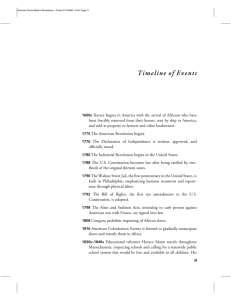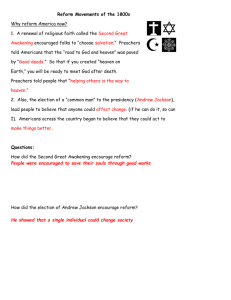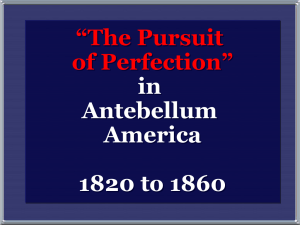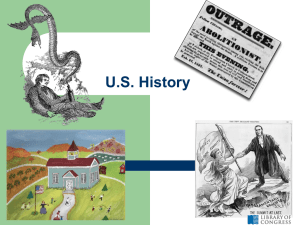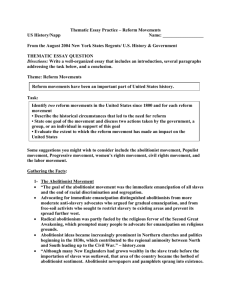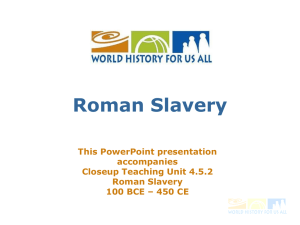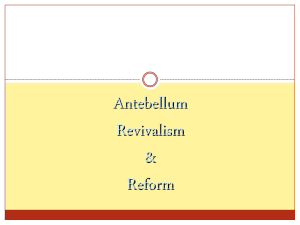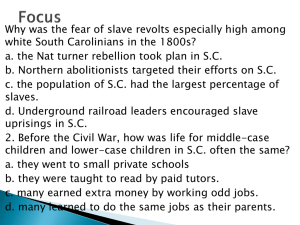File - dbalmshistory
advertisement
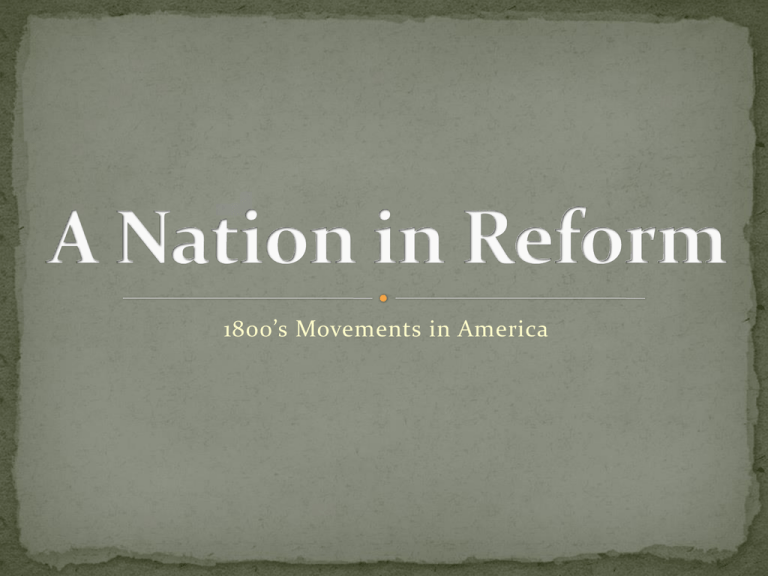
1800’s Movements in America Public schools began to open to create an educated population of voters Teacher’s began to be specially trained and their salaries increased More schools opened School attendance became mandatory through elementary school High schools began to become more common 1796 – 1859 President of the Massachusetts Senate Stepped down to head the new Massachusetts School Board for 12 years Established the standard other states would follow for creating public school systems and teachertraining programs 1819 – 1887 North Carolina’s first school superintendent Championed creating state standards for what should be taught in schools More difficult to get children in school in the South because they were needed for farm work Emma Willard’s Troy Female Seminary in NY (1821) Mary Lyon’s Mount Holyoke Female Seminary in MA (1837) Elizabeth Blackwell: 1st woman to earn a medical degree, built hospital for women and children staffed entirely by women Why did reformers think education was important? Why was it important that the government fund public schools? Inmates were not separated by offense and prisons included the violent & mentally ill Idea of rehabilitation rather than punishment began to take hold States began to build modern prisons (penitentiaries) to house long-term prisoners Mentally ill received no treatment, kept in prisons with common criminals where they received not even the most basic of medical care and were often tortured The field of “mental health” didn’t exist yet 1802 – 1887 Former teacher who took up the plight of the mentally ill Traveled and wrote articles to expose the abuses suffered by the mentally ill Dorothea Dix Hospital in Raleigh was named after her in 1856 What do the efforts and career of Dorothea Dix suggest? How did reform change the prison system? How did the Mentally Ill receive a voice in reform? First labor unions began to form – pushed for higher wages, shorter workdays Early unions had little success – ignored by employers, not supported by the government who saw them as a threat to American industry Men who drank often neglected their families Many bars and saloons, high rate of alcoholism, especially along the frontier and in large Eastern cities 1833: American Temperance Union created 1851: Maine banned sale of alcohol; by 1855 12 other states had done so as well Do you think temperance or prohibition was a more realistic reform goal? What role does religion play in these reform movements? The Second Great Awakening “Spiritual Reform From Within” [Religious Revivalism] Social Reforms & Redefining the Ideal of Equality Temperance Education Abolitionism Asylum & Penal Reform Women’s Rights Movement to end slavery in the United States Took on several different forms Championed primarily by Northerners and women Opposed slavery on moral grounds Earliest form of abolitionism called for the gradual freeing of the slaves – stop importing new slaves, then phase out slavery over time Slave owners would be compensated for their lost property South would have time to adjust its economy 1816 Called for freeing the slaves but then sending them back to Africa Helped establish country of Liberia in West Africa as a home for repatriated slaves Too many slaves to be effective, too expensive to transport millions Most slaves at this point had never seen Africa and didn’t want to go 1785 – 1830 Free African-American from Wilmington, NC who settled in Boston Published “Appeal to the Colored Citizens of the World” Called for a violent rebellion by slaves; pamphlet was banned throughout the South Died under mysterious circumstances – murdered? What was the life of a slave like? Discuss “Slave Spirit” page 279 What were early forms of slave resistance? Describe the life of a freedman? Go Down Moses page 281 1805 – 1879 Editor of the Liberator – an abolitionist newspaper in Boston Demanded immediate emancipation of the slaves rather than any kind of gradual end to slavery Founded American Antislavery Society in 1833 – by 1838 the AAS had over 250,000 members 1811 – 1896 Author of Uncle Tom’s Cabin, a novel which exposed conditions under which slaves lived in the South Made real to many Northerners how brutal the slave system could really be Sarah: 1792 – 1873 Angelina: 1805 – 79 Grew up on plantation in South Carolina but became avid abolitionists Wrote and gave speeches on the realities of slavery 1818 – 1895 Born a slave, but escaped at age 20 Became a speaker and writer – his autobiography was a bestseller Convinced many whites that Africans were intelligent and capable of learning (many in the South had made claims that Africans were not) Second wife was white, which cost him support of fellow AfricanAmericans in his later years 1797 – 1883 Born a slave in NY, gained her freedom when NY emancipated all slaves in 1827 Became a famous abolitionist speaker, especially after her “Ain’t I a Woman?” speech in 1851 Born into slavery to Elijah and Delilah Jacobs in 1813, the daughter of slaves owned by different families. Harriet Ann Jacobs grew up in Edenton, N.C. Incidents in the life of a Slave Girl Obviously, most people in the South opposed the abolition movement (Gag Rule) Many in North feared the divisiveness that the movement would cause between North and South; they would rather maintain the status quo and avoid conflict Some in North feared that freed slaves would all move North, flooding the job market and driving down wages Others feared that if the South’s economy collapsed, it would send the entire nation into a massive economic depression Women’s traditional roles in the North began to change as fewer families worked on farms As women began to take on more social roles and become active in reform movements, demand more political rightsVote Divorce own property Access to birth control Video: “Not for ourselves” pt1 1793 – 1880 First American “feminist” to push for women to gain access to a voice in politics Like many women, began her social activism with the abolitionist movement 1815 – 1902 Argued for women’s suffrage, right to divorce, own property, and access to birth control Also strongly supported the abolitionist and temperance movements 1820 – 1906 Traveled Europe and the US giving 75 – 100 speeches each year for over 40 years Also a force in the abolitionist and temperance movements Arrested in 1872 for illegally voting the presidential election Video: Not for ourselves pt2 1848, Seneca Falls. NY Organized by Mott and Stanton Issued the “Declarations of Sentiments and Resolutions” which added “and women” to the Declaration of Independence’s “all men are created equal” Began the call for suffrage for women What was the role of women in society? What led women to become leaders in the various reform movements we’ve talked about? How did women’s leadership compare to male leadership in the different reform movements? What was the significance of the Seneca Falls Convention?

